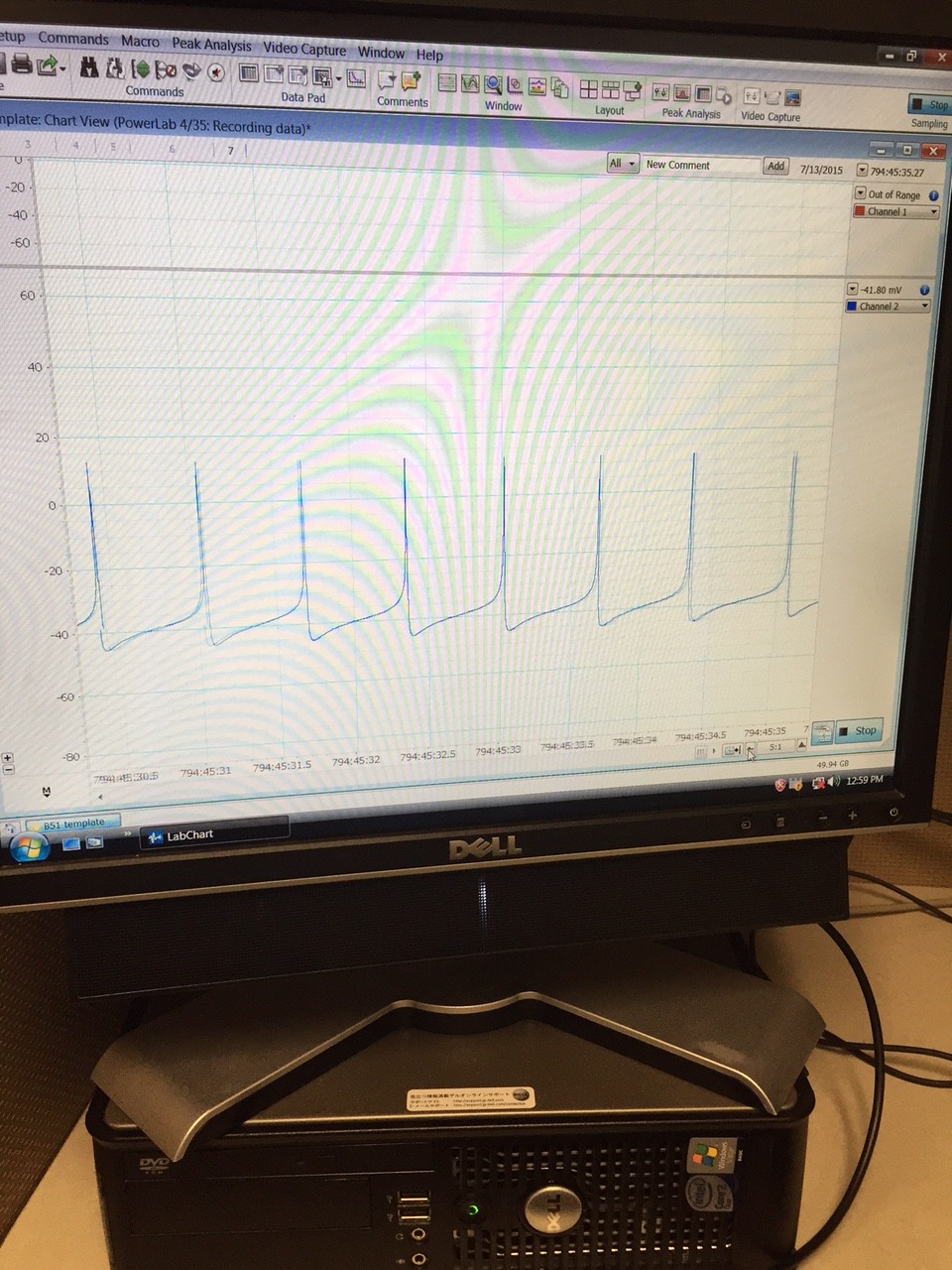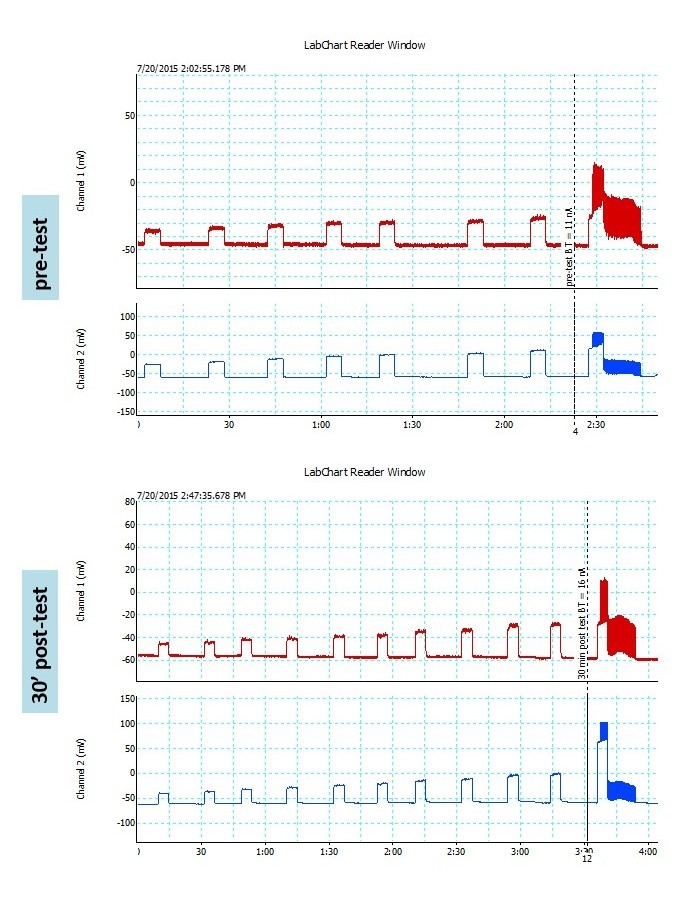Who We Are
What We Did
I was given the opportunity to take part in the following activities and procedures:
- “Listen” to the brain activity in the B51 neural cell
- Create micro pipettes
- Observe and record the aplysia making – and sometimes not making – bites
- Serve on both sides of a blind behavior study – in two separate experiments
- Perform a dissection of the aplysia in search of the buccal ganglia
- Extract the buccal ganglia
- De-sheathe the buccal ganglia under a microscope
- *Attempt* to impale the B51 neuron using stimulating and recording electrodes
- Sedate the aplysia using Magnesium Chloride
Close up of the buccal ganglia
Photo of the surgery as performed by Alvaro. Inserting the electrodes into the specimen.
Complete organ display of the aplysia californica Closeup of the rostral side of buccal ganglia
Closeup of the rostral side of buccal ganglia
More B51 burst threshold determinations
What We Learned
It’s very important to have a steady hand when working underneath the microscope. Even the smallest movement can have disastrous ramifications.
I learned the brain of the snail can survive outside of the body for over a day if properly stored and fed (nutrients).
The methylene blue compound did not block the learning of the snail when injected.
I learned that even some of the simplest organisms are capable of conditioning and making and storing memories.
Questions We Have
How will this research be used when it enters the human transition phase?
What will this research be capable of explaining in humans?
How will the equipment needs change when moving to human subjects?
The brain of the snail is fairly basic when compared to the human brain. How certain are scientists when it comes to the location and function of each neuron in our brain?
Connections to Teaching
My time in the lab reminded me of the metric conversions we learned in math. The prefixes nano, micro, and milli were used in the measurement of liquids and electrical current. The fact that we were studying the effect of fear on feeding directly relates to the science standard that involves observing how organisms live and survive in their environment.



